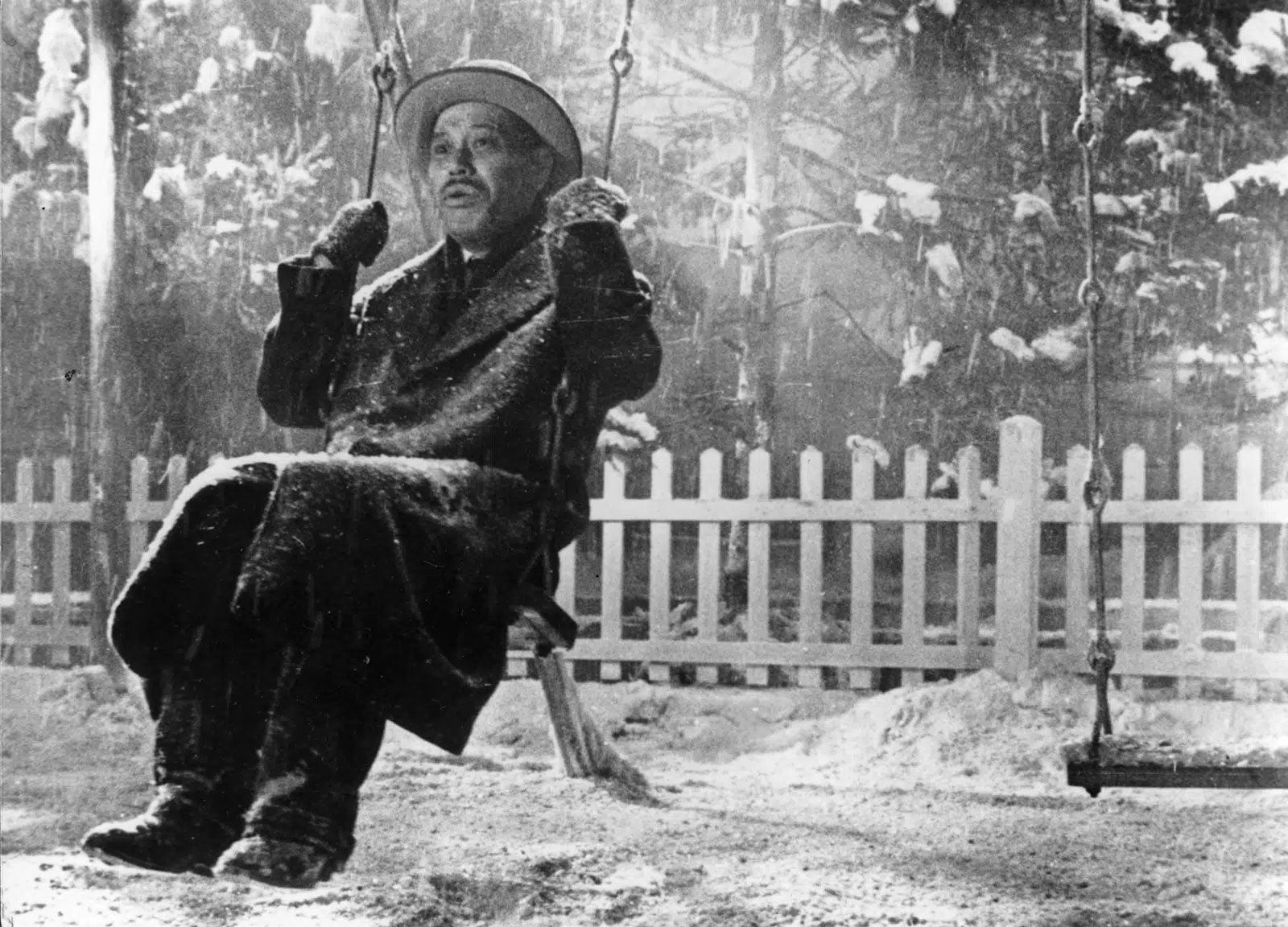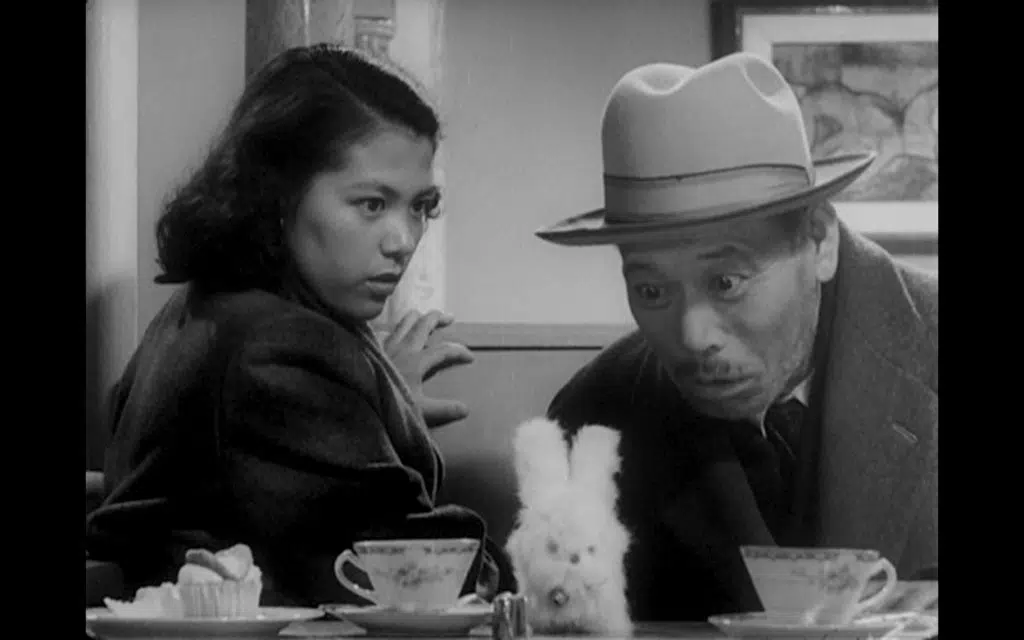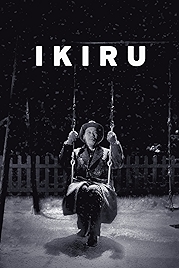Akira Kurosawa’s Ikiru is now old enough – it was released in 1952 – for people to be able to consider it rationally. Almost from the moment it hit the screens it was treated as Kurosawa’s “triumph”, one of the best films ever made, regularly turning up on Sight and Sound magazine’s influential once-a-decade poll of the best movies ever made.
Recently, though, it’s slipped a bit. In 1962 it was number 20 on S&S‘s list. By 2012 it’s “only” at number 136, well behind Kurosawa’s Seven Samurai (17) and Rashomon (24). A 2016 article in the UK’s Daily Telegraph listing its top 10 most overrated films of all time placed Ikiru at number six, between Slumdog Millionaire and Million Dollar Baby. Considering that neither of those films comes laden with Ikuru‘s cultural kudos, that’s quite unusual company.
So what’s the film about? Kurosawa unusually opens with an X-ray of a man’s stomach. This man has cancer, a voiceover tells us, but he doesn’t know it yet. We meet Kanji Watanabe (Takashi Shimura), a bureaucrat who’s spent so long at his desk that he’s almost grown into it. He’s dead already, the voice says, and has been for decades. Instead of getting things done, he shuffles papers from pile A to pile B, moving problems about rather than solving them.
Enter a problem to illustrate: a gang of local women petitioning to have the swampy, mosquito-infested culvert that runs by their homes turned into a park. Watanabe does what he does, punting the problem off to another department, and Kurosawa delivers a Hollywood-esque montage sequence of the women chasing from Public Affairs (Watanabe’s department) to Parks to Highways to Schools to Public Health, and so on, each department kicking the problem further down the road.
Meanwhile, Watanabe has taken his stomach complaint to the doctor and has learned – obliquely – that he has terminal cancer and may only have months to live. Having never missed a day’s work in 30 years, the diligent but useless Watanabe draws a stack of cash out of his bank account and sets out on a voyage of discovery. Or rebirth.
It’s a Wonderful Death – the quip has been made before, but it’s an accurate one. As old Watanabe takes faltering steps into Life (the title is usually translated at To Live), a Frank Capra-esque film starts to emerge, with Watanabe being guided on his new path by two different representatives of a life lived to the full. The first is a writer, who finds Watanabe semi-drunk in a bar and takes him on a night of booze, girls and music. And the second is a sparky subordinate from Watanabe’s office he meets by accident, who shows him a day of fun-loving, but chaste, good times.
Both are lovely performances, Yûnosuke Itô as the heavy-lidded novelist with debauchery written all over his face, and Miki Odagiri as Toyo, the bubbly co-worker who’s realised that office life is deadly and wants out, a Manic Pixie Dream Girl in utero and by far the best thing in the film. Shimura, by contrast, overacts throughout.
From the doctor finding himself incapable of telling Watanabe that he’s going to die (Watanabe pieces it together thanks to a “translator” out in the waiting room), to the petitioning women being sent on a wild goose chase, to young Toyo misconstruing Watanabe’s motives, to Watanabe’s avaricious son’s failure to understand what’s suddenly got into his dad, miscommunication abounds. Getting things all wrong is one of the film’s themes, along with the dead weight of bureaucracy (sledgehammer subtlety here) and restrictive family life.
But mostly it’s about Watanabe’s redemption – returning to work spiritually reinvigorated he moves heaven and earth to get the petitioning women’s park built before he succumbs to his illness.
One of the things that makes Ikiru hard going is its very drab looks, at first anyway. In the pre-Netflix era you could do this sort of thing – be daringly dull – because your audience had paid their money and were trapped in a cinema. Films were not as front-loaded then as they are now.
But the mid-grey palette of DP Asakazu Nakai, the flat performance by Shimura and Kurosawa’s static direction is in keeping with Watanabe in his “dead” state. As he comes back to life, the monochrome picture gains contrast and tonal range, Shimura becomes more animated and Kurosawa starts to swing the camera around. Things lighten up, in other words.
With 50 minutes of running time still to go, our hero is dead and the dead hand of bureaucracy is re-asserting itself. At the official mourning Watanabe’s colleagues hash out whether his was a life well lived or not, in scenes that go on and on. Here, the petitioning women are also re-introduced, pointing up the film’s main structural problem – this plotline simply isn’t integrated well enough, leading to moments of “who are these people again?… oh, yeh”.
One of the film’s final images is of a flashback to Watanabe sitting on a swing singing to himself, in the dark, the snow falling softly around him. It’s pure Capra, Kurosawa’s homage to one of his favourite directors. But Frank Capra would surely never have tolerated Ikiru‘s messy final act.
A lovely film, but not a great one. It’s a Wonderful Life trumps it, and it’s not anywhere on S&S’s big list.
Ikiru – Watch it/buy it at Amazon
I am an Amazon affiliate
© Steve Morrissey 2021


